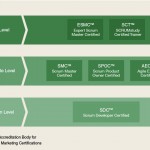There is a saying in Scrum community: If Scrum is not done in a Scrum way then it is not Scrum”
As a methodology Scrum is very easy to understand but very tough to put in practical use. The beauty of Scrum is its Simple nature. Try not to complicate it by adding anything. As a beginner follow the process and it is. Get a good coach and spend some days to really understand it. Use something simple to keep track on your backlogs and understand the basics. Experiment with different estimation techniques, pair programming, test approaches etc. and find out what is best for your team.
Some of the key points to remember while implementing Scrum for the first time:
- Get Scrum Training for your team
- Get extra training for your Scrum Master and Product Owner
- Implement the processes and roles exactly as described in the Scrum Guide.
- Learn to do it the right way before you change.
- Early Focus on technical excellence – TDD, BDD, CI
- Limit number of items are being worked on at once,
- Team should and must work together.
- Team’s goal is to complete the Job, not show that everyone is busy at all the time.
- Initial focus on the “how you get the work done”, what process to follow and quality of the product, as opposed to how much you get done.
- Clearly definition “done” and “ready” for items coming off of and going onto the task-board.
- Don’t skimp on any ceremonies, especially the retrospective, that is your engine of growth.
- Do not use Sprint which is longer than a 2 week. Prefer 1 week if possible. Shorter Sprints have more opportunities for structured improvement.
- Do not to hide dysfunctions.
- Do consider getting outside help, perhaps a coach.







